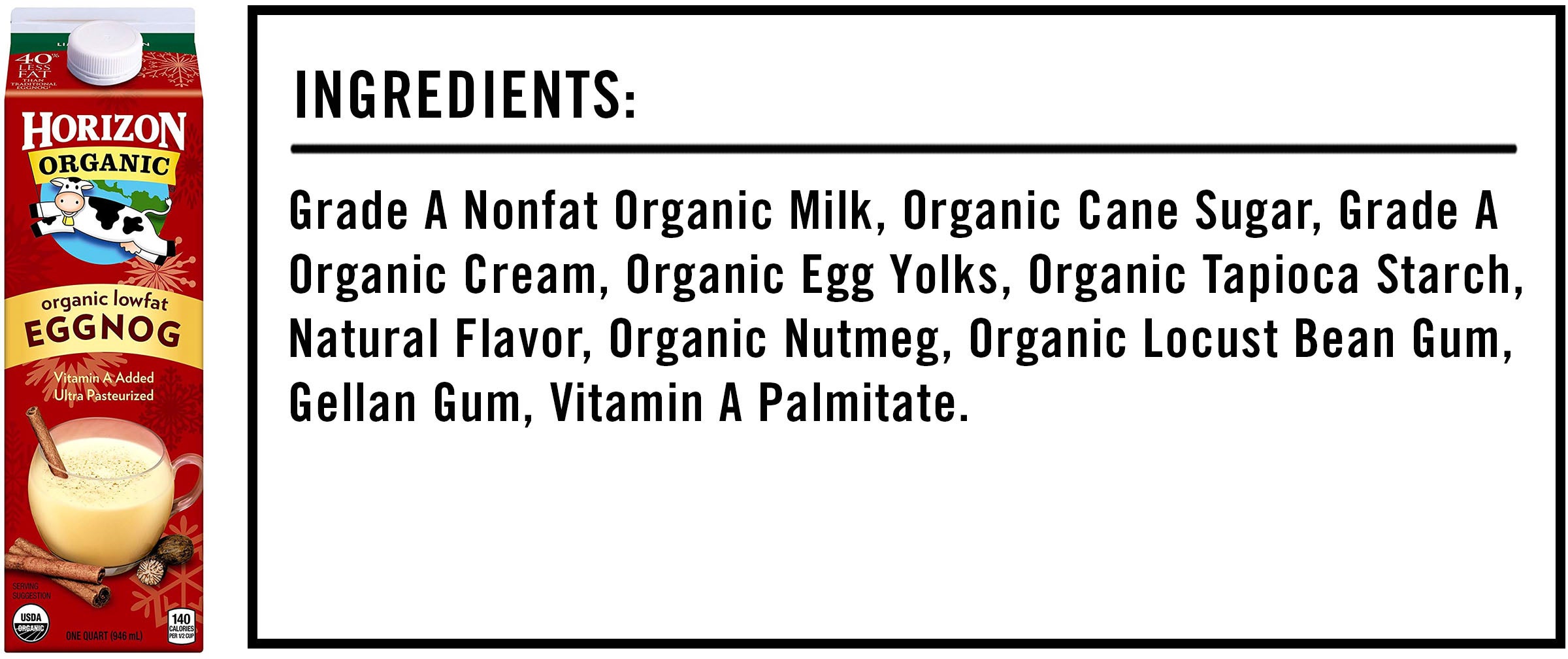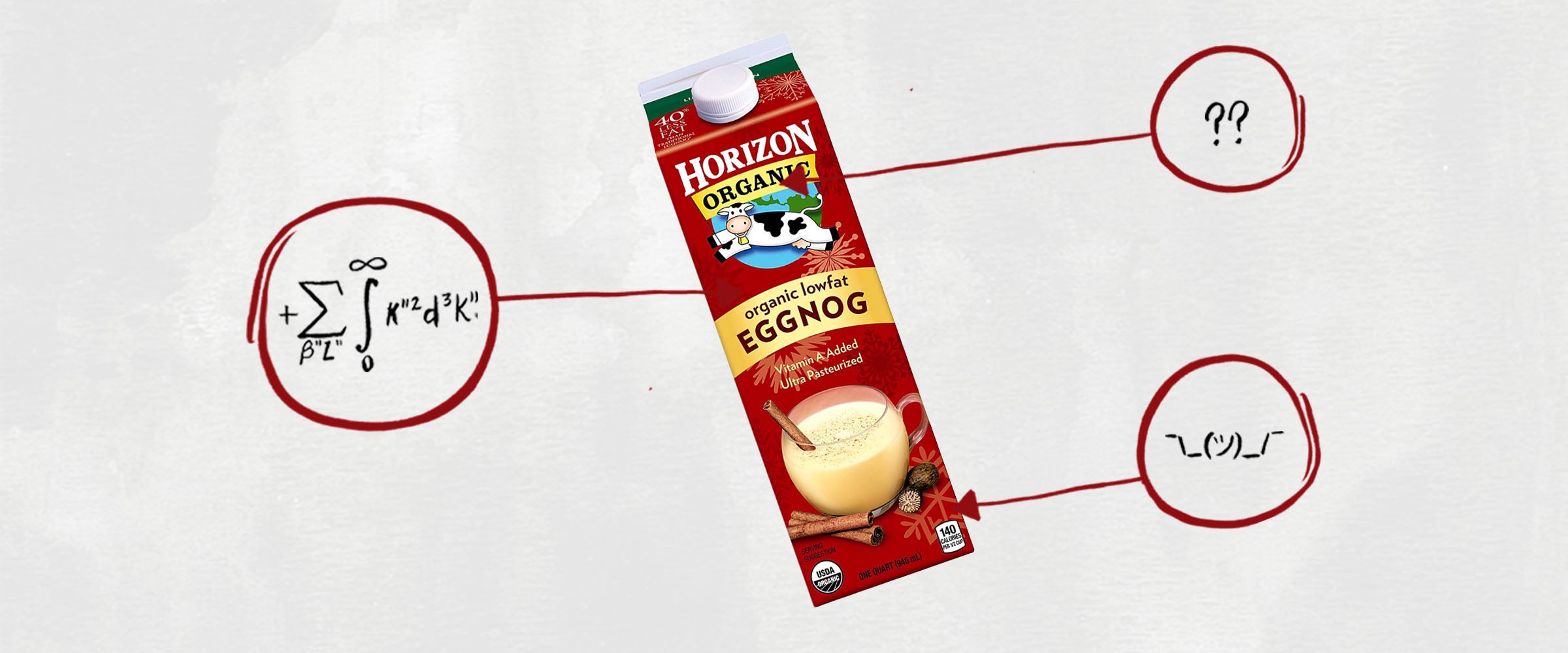We’re often told that you should never eat anything (or put anything on your body) if you don’t recognize everything on the ingredients list. But since most of us have no idea what xanthan gum or potassium benzoate are — or more importantly, what they’re doing to our bodies — we’re decoding the ingredients in the many things Americans put in (and on) themselves with the help of an expert.
This edition: Horizon Organic Lowfat Eggnog, which is made from 10 separate ingredients that we’ve broken down in the exact order they appear on their website. Note: This ingredients list doesn’t include the rum you will inevitably add.

The Ingredients
1) Grade A Nonfat Organic Milk: Grade “A” refers to milk produced under sufficiently sanitary conditions, which qualify the product for consumption as a beverage, as opposed to consumption in the form of cheese, butter and other milk-based byproducts. These conditions are set by the Food and Drug Administration in the form of a 447-page Pasteurized Milk Ordinance.
2) Organic Cane Sugar: One serving (which is only half a cup) of eggnog contains a whopping 22 grams of sugar — or nearly six teaspoons. For reference, the American Heart Association recommends men consume no more than 36 grams and women consume no more than 25 grams of added sugar a day (and that doesn’t include sugar found naturally in foods like fruits and vegetables).
3) Grade A Organic Cream: Cream is basically the layer of fat that rises to the top of milk before undergoing homogenization, a process that breaks down the fat molecules in milk to prevent them from separating.
4) Organic Egg Yolks: Egg yolks provide this beverage with a fluffy, thick texture.
5) Organic Tapioca Starch: This is a thickener, and as an added bonus, it’s gluten-free.
6) Natural Flavor: Natural flavors are literally flavors derived from an actual food source — i.e., nutmeg flavoring taken from real nutmeg.
7) Organic Nutmeg: This adds flavor. Duh.
8) Organic Locust Bean Gum: Locust bean gum is a natural food additive derived from carob seeds. It’s used primarily as a thickening and stabilizing agent.
9) Gellan Gum: Similar to locust bean gum, gellan gum is a thickening agent.
10) Vitamin A Palmitate: This is a compound that acts as a source of vitamin A, which supports vision and the immune system. Vitamin A is naturally abundant in milk fat; however, the skimming process implemented to create reduced fat milk results in the loss of vitamin A, which is why manufactures add it back in as vitamin A palmitate.
The Takeaway
While there aren’t many problematic ingredients in this eggnog, a standard eight-ounce cup contains 44 freaking grams — about 12 teaspoons! — of sugar and three grams of (artery clogging) saturated fat. Adding alcohol to the mix only makes matters worse, as we learned previously:
“Mixing saturated fat and sugar with alcohol spikes your insulin level and puts a serious strain on your digestive system,” explains nutritionist David Friedman, author of Food Sanity: How to Eat in a World of Fads and Fiction. This reduces the amount of fat you burn (more on that here) and increases your risk of developing a litany of chronic diseases, including heart disease and kidney disease.
So unless you want to spend the holidays growing a Santa-style belly, maybe consider skipping the nog and going straight for the rum.

